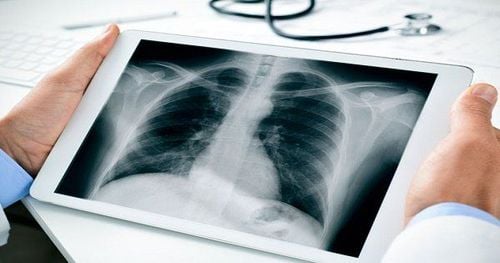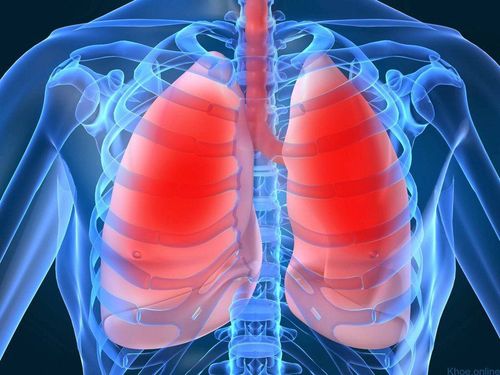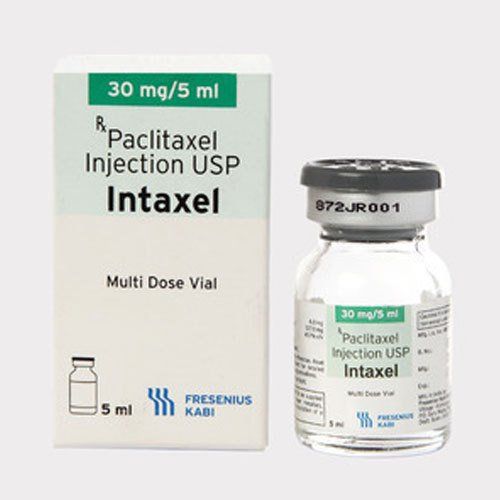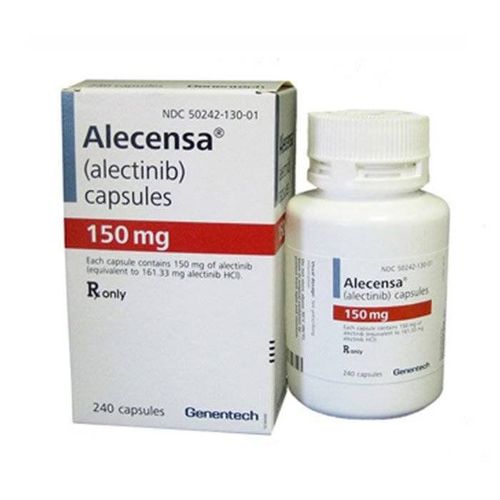This is an automatically translated article.
The article was professionally consulted by MSc Do Thi Hoang Ha - Doctor of Biochemistry, Laboratory Department - Vinmec Hai Phong International General Hospital. The doctor has 11 years of experience working in the field of clinical biochemistry.Lung cancer is one of the cancers with a high rate and is the leading cause of death among cancer diseases in Vietnam. However, many patients with lung cancer do not have symptoms in the early stages, only when they experience symptoms such as cough, shortness of breath, chest pain, weight loss, etc., do they go to the hospital? but at that time the disease was at a late stage and very difficult to treat successfully. Therefore, regular health check-ups and timely necessary tests play an important role in the diagnosis and treatment of lung cancer.
1. What is lung cancer?

Because the disease does not have typical symptoms in the early stages, it is easy to be confused with colds and other respiratory diseases, only transient symptoms even without symptoms, so it is difficult to detect in time. Most of the patients when diagnosed, the disease is in the terminal stage, then the possibility of the disease has developed to the metastatic stage is very high, leading to low treatment results, difficult to cure, the rate of high mortality.
The most prominent symptom of a patient with lung cancer is a cough for a long time, antibiotic treatment does not help, there may be blood and sputum mixed, or chest pain. After the disease worsens, the patient will have shallow breathing, rapid weight loss, difficulty swallowing, hoarse voice, wheezing, pleural effusion.
Lung cancer is divided into 2 main types:
Small cell lung cancer Non-small cell lung cancer
Trắc nghiệm: Làm thế nào để có một lá phổi khỏe mạnh?
Để nhận biết phổi của bạn có thật sự khỏe mạnh hay không và làm cách nào để có một lá phổi khỏe mạnh, bạn có thể thực hiện bài trắc nghiệm sau đây.2. Necessary tests in the diagnosis and treatment of lung cancer
2.1 Chest X-ray Using the results of chest x-ray can detect lung tumors, but in many cases small lesions cannot be seen. Chest X-ray is divided into 2 types:Chest X-ray: used to look for lung tumors, not very effective for small lesions Computerized tomography X-ray: used to detect size, location, invasion of lung tumor, patient's metastatic status, mediastinal lymph nodes, or help guide biopsy when penetrating chest wall for histopathological diagnosis 2.2 Bronchoscopy Bronchoscopy is a method that uses a bronchoscope through the nose or mouth, into the trachea and penetrates deep into the lungs, helping to observe the lung lesions and tumors of the patient originating from the bronchi, and conduct Necessary techniques to take patient's specimens for histopathology and cytology such as bronchial biopsy, transmural bronchial biopsy in the area corresponding to the tumor, bronchial cleaning.
2.3 Tests to assess metastatic status PET/CT: assist in accurate assessment of metastatic lesions, help in correct diagnosis of disease stage Bone scan: to quickly detect metastatic bone lesions. cranial magnetic resonance : to detect brain metastases Abdominal ultrasound, and abdominal computed tomography: helps detect liver, or adrenal metastases,... 2.4 Some tests Lung cancer markers In necessary cases, patients may be assigned to perform lung cancer tests such as:
Cyfra 21 -1 : Although expressed in many different organs, it is present mainly in the lungs. CYFRA 21-1 can be considered as the biomarker of choice for non-small cell lung cancer (mainly squamous cell and large cell cancers). The test works to help doctors accurately diagnose non-small cell lung cancer, people with benign lung disease will have a Cyfra 21 - 1 index below 3.3 μg/L (or 3.3 ng/ml). ). In lung adenocarcinoma, the combination of CYFRA 21-1 and cancer embryonic antigen (CEA) has been shown to be most useful. NSE test: used to help diagnose small cell lung cancer. According to the study, plasma or serum NSE was quantified by the main method of electrochemiluminescence immunoassay in immunoassay aids. Of these, 72% of patients with small cell lung cancer reported an increase in serum NSE level >25 ng/mL, but for other lung cancers it was only about 8%. . The diagnostic sensitivity of the test increases with disease severity in patients with small cell lung cancer and NSE is an additional biomarker for small cell lung cancer and the combination of NSE and ProGRP results increases the accuracy of the test. accurate in histological diagnosis, prognosis, and disease monitoring. NSE levels in patients with small cell lung cancer have been shown to correlate with tumor load, number of metastatic sites, and response to treatment. ProGRP test: For suspected cases of small cell lung cancer or need to quickly distinguish this cancer from other types of lung cancer, the patient may be ordered to perform the ProGRP test. ProGRP has been documented as a specific biomarker for small cell lung cancer but abnormal concentrations can be found in a small subset of patients with non-small cell lung cancer. These concentrations were significantly lower than the serum ProGRP concentrations found in patients with small cell lung cancer. The serum ProGRP level is proportional to the stage of the tumor and if compared with NSE, the ProGRP test is a more sensitive marker test, so it makes it easier for doctors to make a differential diagnosis. with other lung tumors. Note, this test is especially useful for patients who cannot perform lung tumor biopsy. CEA: 29% of patients with lung cancer when the test shows that the CEA index is usually higher than 10 ng/mL (for normal people, the CEA index is only 0 - 2.5 ng/mL). SCC (squamous cell cancer antigen) Squamous epithelial cell is a major component of the epidermis but it is also present in the stroma of the gastrointestinal tract, lungs, and other areas of the body. SCC can be elevated in cancer pathology in many tissue types, mainly lung, cervical.. More advanced cancer stages are associated with higher levels of SCC especially in lung cancer and cancer. Cervical and antigenic measurements, in successive determinations, aid in the assessment of disease recurrence, post-treatment residual disease, and treatment response.
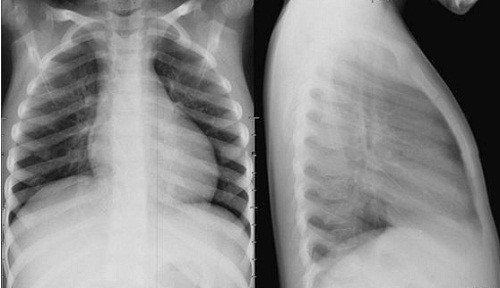
3. Some measures to treat lung cancer
Lung cancer is a disease with many different stages of development. For each stage of the disease, there will be a specific treatment regimen:Tumor removal surgery: usually this method will bring the most effective results when the patient's tumor is small, and has not metastasized. To participate in surgery, the patient must be in stable health. About 20% of patients receive this treatment. Radiation therapy: applied to about 35% of patients, using radiation to destroy tumors when they are still small and not metastasized or used to minimize the growth of large tumors . This method can prolong the patient's life, but in very few cases, the disease can be cured, severely affecting the patient's health. Chemotherapy: 80-90% of patients with small cell lung cancer can have remission when the cancer cells are small, the patient is in the operable stage, and the use of chemotherapy is suitable. suitable for treatment. With other types of lung cancer, the remission rate is only 40-50%. In cases where the disease has reached a late stage, chemotherapy only provides relief from symptoms and prolongs the patient's life. Supportive treatment: often used for terminally ill patients, to help care for the patient, and to treat symptoms, to relieve pain. There are different types of lung cancer tests that help assess each tumor stage of the disease. Lung cancer test results have an important meaning in the diagnosis and treatment of the disease, helping to build a suitable treatment course for the patient.
Vinmec International General Hospital is one of the hospitals that not only ensures professional quality with a team of leading medical professionals, modern equipment and technology, but also stands out for its examination and consultation services. comprehensive and professional medical consultation and treatment; civilized, polite, safe and sterile medical examination and treatment space. Customers when choosing to perform tests here can be completely assured of the accuracy of test results.
If there is a need for consultation and examination at the Hospitals of the national health system, please book an appointment on the website to be served.
Please dial HOTLINE for more information or register for an appointment HERE. Download MyVinmec app to make appointments faster and to manage your bookings easily.







